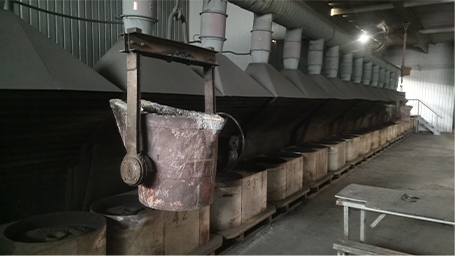Dec . 07, 2024 02:05 Back to list
how to machine brake drums
How to Machine Brake Drums A Comprehensive Guide
Brake drums are crucial components of a vehicle's braking system, particularly in older models that utilize drum brakes. Over time, brake drums can become warped, cracked, or scored, leading to impaired braking performance. Machining the brake drums can restore their functionality and extend their service life. In this article, we will explore the process of machining brake drums in a detailed and systematic manner.
Understanding the Importance of Brake Drums
Before delving into the machining process, it's vital to understand why brake drums are important. Brake drums work in conjunction with brake shoes to create friction that slows down or stops the vehicle. As the brake shoes press against the inner surface of the drum, the resultant friction generates heat, which can cause wear over time. Regular inspection and maintenance of brake drums can prevent dangerous situations caused by braking failures.
Tools and Equipment Needed
To machine brake drums effectively, you'll need the following tools and equipment
1. Brake Drum Lathe This is the primary tool used for machining brake drums. It is designed to remove material from the surface while ensuring a smooth finish. 2. Measuring Tools Calipers and micrometers are essential for measuring drum thickness and ensuring it meets manufacturer specifications. 3. Safety Equipment Safety goggles, gloves, and a dust mask are necessary for protecting yourself during the machining process. 4. Brake Drum Inspection Tools These include a magnifying glass or borescope to check for cracks or damage inside the drum.
Steps for Machining Brake Drums
1. Remove the Brake Drum Begin by lifting the vehicle using a jack and securing it with jack stands. Remove the wheel, and subsequently, detach the brake drum from the wheel hub. This may involve removing retaining clips or bolts.
how to machine brake drums

2. Inspect the Brake Drum Once detached, inspect the brake drum for any visible signs of damage, including cracks, scoring, or excessive wear. Use measuring tools to check the thickness of the drum. Most manufacturers specify a minimum thickness; if the drum is below this threshold, it should be replaced rather than machined.
3. Set Up the Brake Drum Lathe Place the brake drum on the lathe and secure it firmly. Adjust the lathe settings according to the manufacturer's recommendations. This may involve setting the speed and depth of cut to ensure a smooth finish.
4. Machining Process Engage the lathe and begin machining the surface of the drum. It's essential to make even passes to maintain a uniform thickness. Keep an eye on the measurement to ensure that you do not exceed the minimum thickness specification.
5. Check for Runout After machining, check the drum for runout using a dial indicator. This test ensures that the surface is perfectly round and will make even contact with the brake shoes. Any runout should be corrected by further adjustments on the lathe.
6. Finish and Clean Once the machining is complete, clean the drum thoroughly to remove any metal shavings or debris. A clean surface is crucial for optimal brake performance.
7. Reinstallation After cleaning, reinstall the brake drum onto the vehicle. This process involves reversing the steps taken during removal. Ensure all nuts and bolts are tightened to the manufacturer's specifications.
8. Testing After everything is reassembled, perform a test drive. Allow the brakes to bed in after machining by applying them gently during the initial miles. Listen for any unusual noises and ensure the brake system feels solid and responsive.
Conclusion
Machining brake drums is an essential maintenance task that can greatly improve the performance and safety of a vehicle. While the process requires some specialized tools and skills, it is achievable for those who want to take on vehicle maintenance tasks themselves. Regular inspections and machining when necessary can prolong the life of your braking system and ensure safe driving conditions. Always prioritize safety and consult a professional if you are unsure about any part of the process.
-
Your Brake Drum Man: Premium & Reliable Brake Drums for Sale
NewsAug.18,2025
-
ROR Web Development: Build Fast, Scalable, Secure Apps
NewsAug.17,2025
-
Scania Brake Drums: OEM Quality for Optimal Safety & Durability
NewsAug.16,2025
-
R.V.I: Advanced Remote Visual Inspection for Precision
NewsAug.15,2025
-
Discover HYUNDA: Innovative Vehicles, Equipment & Solutions
NewsAug.14,2025
-
R.V.I: Unlock Advanced Insights & Real-time Performance
NewsAug.13,2025
